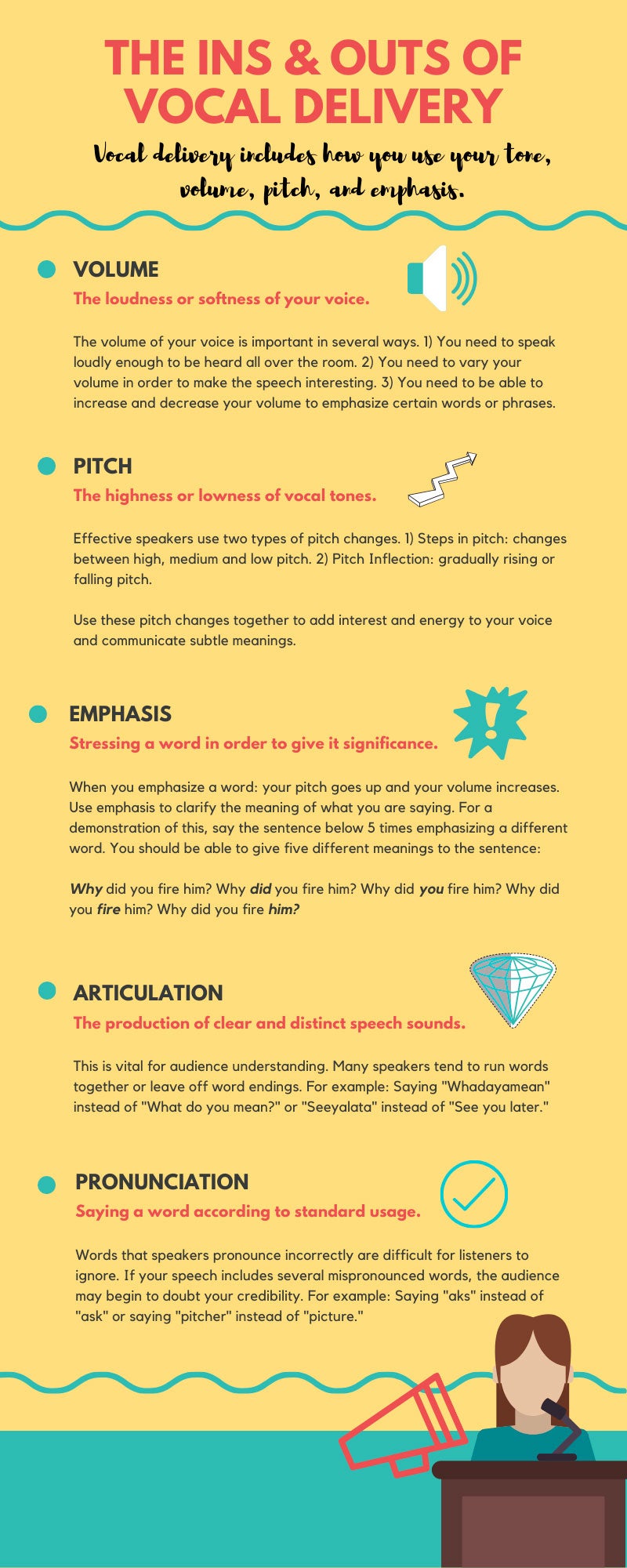THE INS & OUTS OF VOCAL DELIVERY
Vocal delivery includes how you use your tone, volume, pitch & emphasis
VOLUME
The loudness or softness of your voice.
The volume of your voice is important in several ways.
-
- You need to speak loudly enough to be heard all over the room.
- You need to vary your volume in order to make the speech interesting.
- You need to be able to increase and decrease your volume to emphasize certain words or phrases.
PITCH
The highness or lowness of vocal tones.
Effective speakers use two types of pitch changes.
1) Steps in pitch: changes between high, medium and low pitch.
2) Pitch Inflection: gradually rising or falling pitch.
Use these pitch changes together to add interest and energy to your voice and communicate subtle meanings.
EMPHASIS
Stressing a word in order to give it significance.
When you emphasize a word: your pitch goes up and your volume increases. Use emphasis to clarify the meaning of what you are saying. For a demonstration of this, say the sentence below 5 times emphasizing a different word. You should be able to give five different meanings to the sentence:
Why did you fire him? Why did you fire him? Why did you fire him? Why did you fire him? Why did you fire him?
ARTICULATION
The production of clear and distinct speech sounds.
This is vital for audience understanding. Many speakers tend to run words together or leave off word endings. For example: Saying “Whadayamean” instead of “What do you mean?” or “Seeyalata” instead of “See you later.”
PRONUNCIATION
Saying a word according to standard usage.
Words that speakers pronounce incorrectly are difficult for listeners to ignore. If your speech includes several mispronounced words, the audience may begin to doubt your credibility. For example: Saying “aks” instead of “ask” or saying “pitcher” instead of “picture.”
For more help with this come visit us at the Center for Communication Excellence
Main Campus – 205 Joyner East / Phone: 252-328-2790

